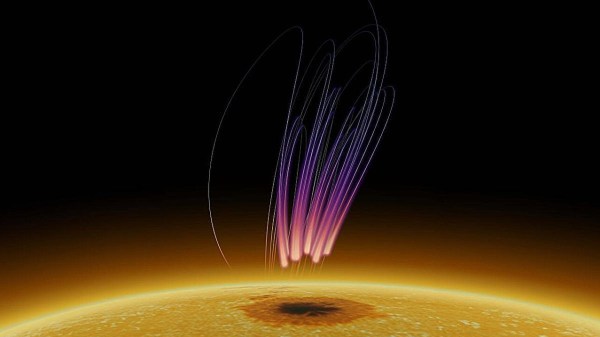Sustained radio emissions originating from high over a sunspot are getting researchers thinking in new directions. Unlike solar radio bursts — which typically last only minutes or hours — these have persisted for over a week. They resemble auroral radio emissions observed in planetary magnetospheres and some stars, but seeing them from about 40,000 km above a sunspot is something new. They don’t seem tied to solar flare activity, either.
The signals are thought to be the result of electron cyclotron maser (ECM) emissions, which involves how electrons act in converging geometries of magnetic fields. These prolonged emissions challenge existing models and ideas about how solar and stellar magnetic processes unfold, and understanding it better could lead to a re-evaluation of existing astrophysical models. Perhaps even leading to new insights into the behavior of magnetic fields and energetic particles.
This phenomenon was observed from our very own sun, but it has implications for better understanding distant stellar bodies. Speaking of our sun, did you know it is currently in it’s 25th Solar Cycle? Check out that link for a reminder of the things the awesome power of our local star is actually capable of under the right circumstances.












